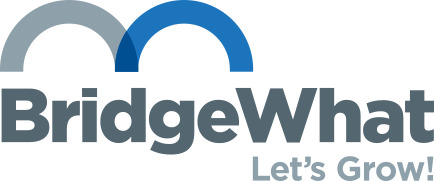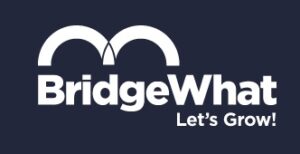
Compliance in the Digital Age: BPO and RPA Integration – by Impacting Digital
The compliance area is a critical pillar for maintaining business integrity and fostering governance. Organizations face a myriad of challenges, ranging from stringent regulatory requirements to the complexity of managing large amounts of sensitive data. These challenges not only pose operational risks but also demand innovative solutions to ensure adherence to standards and regulations.
I. Understanding Compliance Challenges
Faced with complex regulations, organizations encounter a series of common compliance challenges spanning various industries. These challenges often include adapting to complex regulatory requirements, managing voluminous documentation, and ensuring that employees follow rigorous protocols. Failing to address these challenges head-on can result in financial penalties, legal consequences, and damage to reputation.
Sensitive documents, in particular, within compliance processes often include financial records, customer data, legal documents, among others. These documents are not only subject to regulatory scrutiny but are also essential for the daily operations of an organization. Ensuring the secure and efficient management of these documents is a cornerstone in the broader context of compliance.
In this context, technology emerges as an ally to tackle these challenges. The role of technology is not only to automate tasks but also to provide a strategic framework for managing compliance comprehensively. The integration of Business Process Orchestrator (BPO) and Robotic Process Automation (RPA) emerges as a strategy to overcome compliance challenges.
II. Business Process Orchestrator (BPO) and Robotic Process Automation (RPA)
The Business Process Orchestrator (BPO)(link tag) represents a strategic approach to simplify and optimize end-to-end complex business processes. Unlike traditional automation solutions, BPO transcends the boundaries of individual tasks, focusing on the concentration and integration of entire workflows. BPO acts as a conductor, harmonizing various processes across departments, ensuring continuous collaboration, and enhancing overall operational efficiency.
In the context of compliance management, BPO plays a crucial role in aligning processes with regulatory requirements. By providing a centralized platform for managing workflows, BPO enables organizations to standardize processes, monitor progress, and respond quickly to potential changes.
Robotic Process Automation (RPA)(link tag) is the technology that allows software robots, or “bots,” to replicate the actions of a human interacting with digital systems.
In compliance, RPA proves efficient in automating routine tasks such as data entry, validation, and report generation. This not only speeds up the pace of processes but also enhances accuracy, as bots execute tasks consistently and without interruptions. RPA also ensures that data is handled accurately, reducing the likelihood of discrepancies that could lead to regulatory violations.
The integration of BPO and RPA creates a dynamic ecosystem where each component complements the other. In the context of compliance, these technologies offer a comprehensive solution. BPO ensures that end-to-end compliance workflows are streamlined, monitored, and adaptable to changes. Meanwhile, RPA takes care of granular and repetitive tasks within these workflows, ensuring speed, precision, and consistency.
III. Managing Sensitive Documents with BPO and RPA
The Business Process Orchestrator (BPO) plays a fundamental role in addressing challenges associated with managing sensitive documents. By providing a centralized platform to manage all processes, BPO ensures that document workflows are standardized, monitored, and optimized. BPO facilitates the creation of secure document repositories, where access controls, versions, and audit trails are systematically managed, ensuring that sensitive documents are treated with the utmost care.
RPA complements BPO in the secure management of sensitive documents by automating specific tasks within document workflows. RPA excels in document classification, extraction of relevant information, and secure storage, reducing the manual effort required and minimizing the risk of errors.
As an example of RPA utilization, document classification based on predefined criteria ensures that sensitive documents are appropriately marked and routed in workflows. RPA can also automate data extraction from documents, eliminating the need for manual data entry and reducing the risk of inaccuracies.
Conclusion
The need for organizations to adopt technology-driven solutions to enhance efficiency in compliance becomes increasingly evident. The integration of BPO and RPA represents a strategic step for organizations to easily adapt to the regulatory environment. This collaboration not only improves process efficiency but also provides a robust framework to address compliance challenges with precision.
What to read next?

Navigating Brazilian Bureaucracy: Your Guide to a Smooth Business Entry – by Berg&Co Business Consulting
Entering the Brazilian market is an attractive proposition for any international company looking to expand its footprint. However, the path is often fraught with complex bureaucracy, regulatory challenges, and logistical hurdles.

Compliance in the Digital Age: BPO and RPA Integration – by Impacting Digital
The compliance area is a critical pillar for maintaining business integrity and fostering governance. Organizations face a myriad of challenges, ranging from stringent regulatory requirements to the complexity of managing large amounts of sensitive data.

A nova plataforma de soluções e serviços para a transformação do setor da saúde – Glintt Healthcare Solutions
Eduardo Antunes, Administrador Executivo da Glintt, fala sobre o impacto da tecnologia no setor da saúde.
A saúde é dos setores onde a digitalização tem tido mais impacto. O que mudou na relação entre os clientes e os prestadores de cuidados de saúde?

Navigating the Unseen Threat: How Ignoring Cartels Can Undermine Your Supply Chain and Missed Opportunities for ESG Enhancement – By Ivan Comerma
Empowering Businesses to Combat Cartels: How OKLAIM Merges ESG Compliance with Supply Chain Management for Ethical and Financial Advancement

